Do you have a question about the Fronius Symo Hybrid and is the answer not in the manual?
Lists the essential components of the system, including the inverter, check box, and battery.
Details the technical specifications, environmental conditions, and electrical characteristics of the Checkbox 500V.
Explains the meaning and function of the status LED indicator on the Fronius Checkbox 500V.
Provides essential advice and considerations to review before commencing the system installation.
Outlines the sequential steps required for the proper commissioning of the hybrid system.
Specifies the maximum permissible distances between the inverter, Checkbox, and battery.
Details the correct Modbus cabling configuration and the placement of terminating resistors.
Illustrates the pin assignments for data cables connecting to third-party batteries.
Highlights critical safety warnings and precautions for the installation of the Fronius Checkbox.
Illustrates acceptable and unacceptable locations for mounting the Checkbox outdoors.
Explains the procedure for installing ferrite rings on data lines to prevent electromagnetic interference.
Emphasizes safety procedures and required knowledge for setting up and using system monitoring.
Guides through the first-time startup process and initial connection of the system monitoring.
Describes the process of configuring system monitoring using the Fronius Solar.web mobile application.
Details how to set up and configure system monitoring using a standard web browser.
Covers inputting general system details, such as name and time settings, within the technician wizard.
Explains how to set and securely manage the service password for system access and settings.
Details how to configure input/output interfaces and assign pins within the system monitoring settings.
Guides on configuring the overall PV system view, including generator, meter, and battery status.
Explains how to configure settings related to dynamic power reduction for the entire system.
Informs about the required software version for supporting third-party batteries and checking the current version.
Provides step-by-step instructions for updating the inverter's firmware using a web browser.
Outlines the procedures and crucial precautions for updating third-party battery software.
Details the process of setting up IO mapping within the system monitoring interface for energy storage.
Explains how to adjust settings in the system overview section, including battery and meter configuration.
Addresses issues where the battery remains in energy saving mode and cannot be activated by the inverter.
Lists the essential components of the system, including the inverter, check box, and battery.
Details the technical specifications, environmental conditions, and electrical characteristics of the Checkbox 500V.
Explains the meaning and function of the status LED indicator on the Fronius Checkbox 500V.
Provides essential advice and considerations to review before commencing the system installation.
Outlines the sequential steps required for the proper commissioning of the hybrid system.
Specifies the maximum permissible distances between the inverter, Checkbox, and battery.
Details the correct Modbus cabling configuration and the placement of terminating resistors.
Illustrates the pin assignments for data cables connecting to third-party batteries.
Highlights critical safety warnings and precautions for the installation of the Fronius Checkbox.
Illustrates acceptable and unacceptable locations for mounting the Checkbox outdoors.
Explains the procedure for installing ferrite rings on data lines to prevent electromagnetic interference.
Emphasizes safety procedures and required knowledge for setting up and using system monitoring.
Guides through the first-time startup process and initial connection of the system monitoring.
Describes the process of configuring system monitoring using the Fronius Solar.web mobile application.
Details how to set up and configure system monitoring using a standard web browser.
Covers inputting general system details, such as name and time settings, within the technician wizard.
Explains how to set and securely manage the service password for system access and settings.
Details how to configure input/output interfaces and assign pins within the system monitoring settings.
Guides on configuring the overall PV system view, including generator, meter, and battery status.
Explains how to configure settings related to dynamic power reduction for the entire system.
Informs about the required software version for supporting third-party batteries and checking the current version.
Provides step-by-step instructions for updating the inverter's firmware using a web browser.
Outlines the procedures and crucial precautions for updating third-party battery software.
Details the process of setting up IO mapping within the system monitoring interface for energy storage.
Explains how to adjust settings in the system overview section, including battery and meter configuration.
Addresses issues where the battery remains in energy saving mode and cannot be activated by the inverter.
| Power Output Range | 3.0 - 5.0 kW |
|---|---|
| DC Maximum Input Voltage | 1000 V |
| Protection Rating | IP65 |
| Dimensions | 645 x 431 x 204 mm |
| MPPT Voltage Range | 200 - 800 V |
| Number of MPP Trackers | 2 |
| Operating Temperature Range | -25°C to +60°C |
| Warranty | 5 years |
| Efficiency | 98% |
| AC Nominal Power | 3.0 kW, 4.0 kW, 5.0 kW |
| AC Output Power | 3.0 - 10.0 kW |
| Maximum Input Current | 16 A |
| Cooling | Fan-cooled |
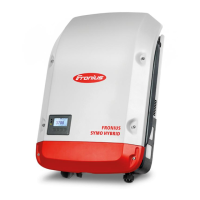

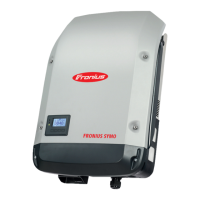
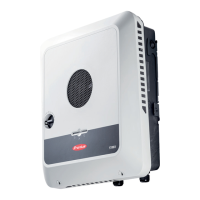
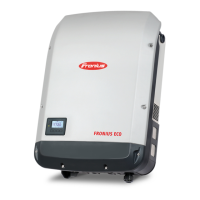




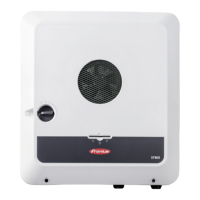
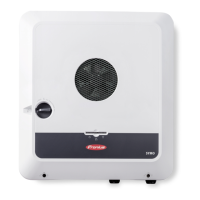

